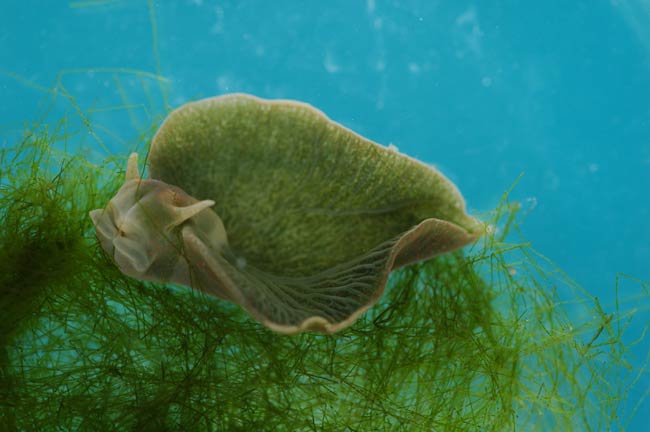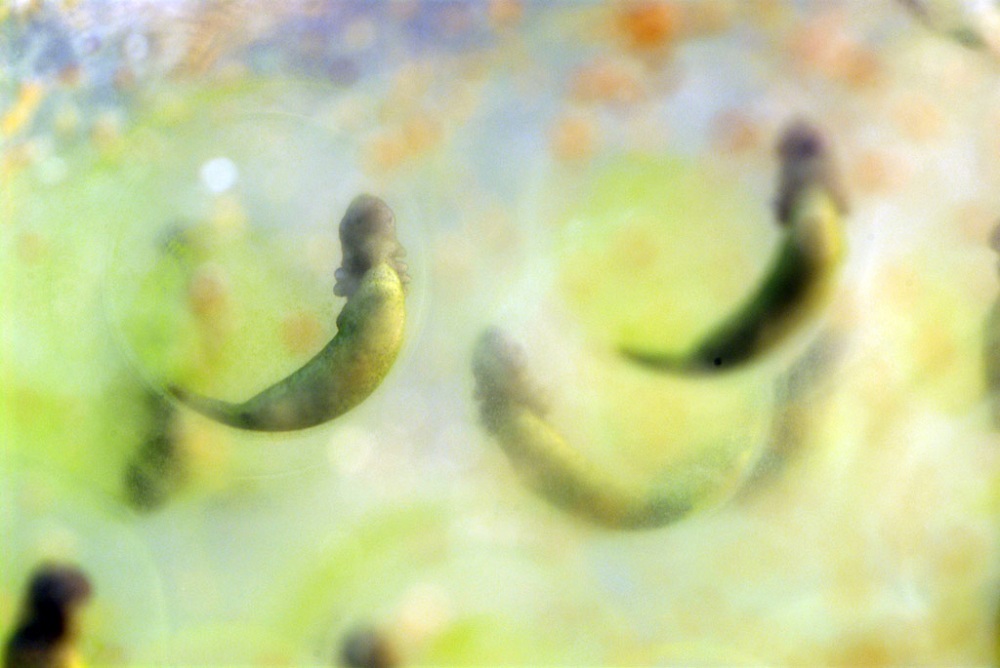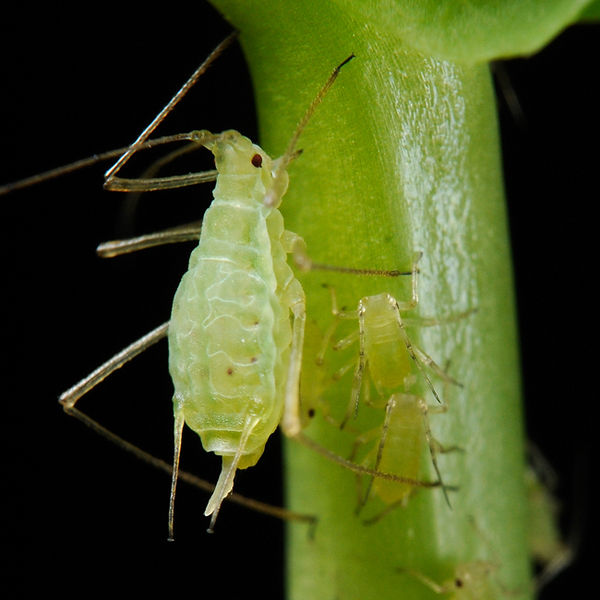Going Green: The Most Plantlike Animals


There's a species of sea slug, Elysia chlorotica, that only needs to eat when it is very young.
It gorges on algae, stealing their ability to harness the sun's energy, and then proceeds to sunbathe for the rest of its 10-month life.
But it's hardly alone: Other animals also take on some traits of plants in order to give them an edge against competitors. From solar-powered aphids to algae-embedded salamanders, these animals serve as living biology lessons and could be used to better understand immunity and improve gene therapy.
Here's a look at the weird ways some animals partner with and mimic plants.
Symbiosis
If you can't do the things a plant can, then it's best to make nice and establish a symbiotic relationship with photosynthetic microorganisms. This is the trick used by many species of coral: They provide the skeleton and housing, and the sun-powered microbes called zooxanthellae provide the energy. [Extreme Life on Earth: 8 Bizarre Creatures]
But coral aren't the only organisms that make friends with algae. There is one symbiotic relationship that is strangely intimate — and even more perplexing. Every spring in the northeastern United States, spotted salamanders awake from their subterranean slumber and gather in pools to breed. "They basically have orgies where they lay their clutches of eggs," said Ryan Kerney, who studies amphibians at Gettysburg College. "A couple days later, all the eggs will turn a slight green tinge."
Get the world’s most fascinating discoveries delivered straight to your inbox.
What's this all about, he wondered? It turns out that a certain type of algae lives in these eggs, and confers a slight benefit to the developing embryo by increasing the concentration of oxygen in their cells. Strangely, though, Kenney found that these algae actually burrow inside the cells of the embryo. It's the first time a symbiotic organism has been shown to penetrate the cells of a vertebrate, he said.
"This isn't supposed to happen," he added. That's because vertebrates have an immune system that usually attacks foreign organisms.
Solar-powered sea slugs
Then there are sacoglossan sea slugs, several species of which can steal the chloroplasts of algae and photosynthesize themselves. This is very strange indeed, since chloroplasts need constant upkeep by the molecular machinery within algae and plants. Somehow, the slug has found out how to keep them running in an alien body.
"This just should not work on the face of it, but it does," said Sidney Pierce, a biologist at the University of South Florida. Pierce has spent much of the last four years looking for genes that could explain how these chloroplasts function. Within the cells of Elysia chlorotica, he's found about 50 genes involved in photosynthesis.
How are genes transferred from algae to the slug? "If I knew that, I'd have figured out how gene therapy works and I'd be a millionaire and retired," Pierce said. Gene therapy involves inserting genes into human DNA, and has the potential to help treat everything from cancer to blindness. It has proven elusive, however, due in part to the difficulty of inserting foreign DNA into the human genome and getting it to function as desired.
Others are not so sure that Pierce has proven how these sea slugs work their magic. Researchers Mary Rumpho, at the University of Connecticut, and Heike Wägele, at Germany's Centre for Molecular Biodiversity Research, both question his findings. They said they aren't convinced the genes he's found have inserted themselves into the slug's DNA. Furthermore, many more than 50 genes would be necessary to keep these chloroplasts running, they said.
Wägele said she thinks the solution has to do with the slug's behavior, rather than its genes. These slugs shield the chloroplasts with curtainlike flaps on its body called parapodia to make them last longer, she said. The chloroplasts themselves are also unique, and much more long-lasting than most, she added. [Real or Fake? 8 Bizarre Hybrid Animals]
"The current state of knowledge is that we don't know how they do it," Rumpho said.
Aphids
Pea aphids don't require thievery to produce energy from the sun.
A study published earlier this year in the journal Scientific Reports found that when placed in the light, pea aphids can produce adenosine triphosphate, or ATP, the cellular energy currency that powers biochemical reactions. (For animals, cells typically convert food into ATP, while plants create ATP via photosynthesis.)
Pea aphids are already special because they make carotenoids, which are usually produced by plants and microorganisms, and which can act as antioxidants when consumed by humans. These carotenoids help determine the color of the aphids and are also capable of making ATP from sunlight, wrote study author Alain Robichon, of France's Sophia Agrobiotech Institute, in an email.
Growing leaves
It's easy to marvel at the wizardry of these solar-powered animals, and natural to wonder: What can humans learn from their tricks? Could we ever employ these techniques? Scientists said that studies of "photosynthetic" animals could help improve gene therapy; if humans figure out how algal genes were transferred into the slugs, it could perhaps help us transfer useful genes from other creatures into our own DNA, Pierce said.
Rumpho said this research could help understand how slugs and salamander embryos know not to attack these foreign organisms, which could shed light on the workings of the immune system.
Unfortunately, it may however be awhile before we can make ourselves photosynthetic and sunbathe instead of eating; animals need much more energy than plants to move about — and making a human's skin photosynthetic, for example, would provide a negligible energy boost, Pierce said.
That is, unless we drastically altered our bodies to resemble trees. "We'd all have to grow leaves if we wanted to do it," he said.
Reach Douglas Main at dmain@techmedianetwork.com. Follow him on Twitter @Douglas_Main. Follow OurAmazingPlanet on Twitter @OAPlanet. We're also on Facebook and Google+.





